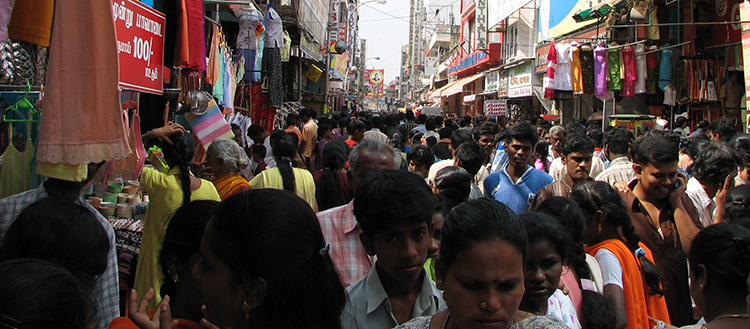Assessing India’s health with a single question
“What would you say about your health status?” Researchers from UNIGE and Calcutta have been examining how reliable this self-assessment question is for demographic and public health surveys in middle-income countries.

© All rights reserved
A country can estimate its population’s health status by using national survey questionnaires. A country like India, however, requires substantial, costly resources to monitor the health of its citizens, due to its size and its geographical and demographic diversity. Researchers at the University of Geneva (UNIGE), Switzerland, began wondering whether it was possible to use the single question – “What would you say about your health status?” – that is widely used in Europe and the USA. Working in collaboration with economists from the Institute of Development Studies Kolkata, the team at UNIGE compared Indian and Swiss databases. Their conclusions were two-fold: they found that the question provided a sound understanding of the health status of the Indian population and that the Indian data was more reliable than the Swiss. You can read all about the research in BMJ Global Health.
Is it possible, using a single question, to evaluate the general health status of a rich country like Switzerland as well as that of a middle-income country such as India? “In Europe and other high-income countries, surveys ask a general question about an individual’s health: ‘What would you say about your health status?’”, explains Stéphane Cullati, a researcher at UNIGE’s Institute of Sociological Research. “And the possible answers are: ‘Very good’, ‘Good’, ‘Average’, ‘Bad’, or ‘Very bad’. We wanted to know whether this same question would be suitable for a country as socially diverse as India. Initially at least, our Indian colleagues were sceptical.”
This question, simple as it is, is based on the self-evaluative capacity of populations regarding their health status. But is this self-evaluating capacity sufficient within the Indian population which is hit by poverty and suffers not just from infectious diseases due to nutritional and hygienic deficiencies but also from chronic diseases, which are on the rise? “In some of the poorest states in India, people are sometimes inclined to think that diseases are ‘normal’, even though they are actually preventable”, says Claudine Burton-Jeangros, a full professor in UNIGE’s Faculty of Science. “This is because diseases can be common and medical facilities rare. Likewise, illiteracy restricts the access of a certain section of the population to medical expertise, sometimes preventing them from establishing that their pains are due to chronic diseases, such as diabetes.”
High-income countries versus middle-income countries
The World Health Organization (WHO) conducted a major survey of Indian citizens in 2003, which included health. In Switzerland, the Federal Statistics Office has been carrying out a health survey every five years since 1992. The UNIGE researchers compared the 2003 Indian data with the 2007 Swiss data, using about 20 comparable indicators between the two databases and measuring four key health factors: physical (heart problems, breathing difficulties and chronic diseases), mental (depression, anxiety, etc.), functional (walking, self-care, etc.) and health behaviours (physical activity, vegetable consumption, etc.). “We then evaluated the statistical association between the responses given for each indicator and the replies concerning the general state of health”, continues Cullati.
The Geneva sociologists soon noticed that this simple question proved more effective with the Indian data. While in Switzerland about 80% of the population consider to be in good or very good health and fewer than 1% ‘in very bad health’, in India each category has its share of responses, with around 15% ‘very poors’ for 21% ‘very goods’. The variance in the general state of health is captured better in India than in Switzerland. “That’s why, in high-income countries, we include the ‘excellent’ category in addition to the ‘good’ and ‘very good’ categories, so people can better situate their general state of health and we can distribute the population into the various categories more effectively,” explains Burton-Jeangros.
Why should we want to know the population’s state of health?
Thanks to the study by the researchers in Geneva and Calcutta, the Indian authorities now have good reasons to believe that the simple question: “What would you say about your health status?” gives a reliable overview of the general health status of the population and thus can be used in survey questionnaires. “This is important information when devising these questionnaires, because if they are too long, people don’t reply,” points out Cullati.
Moreover, if politicians are sure that this question gives them reliable and ready-to-use data, they can rely on this type of survey with the general population to modify the provision of health care – and especially to observe the development of various diseases. “In fact, India is facing what we call a double burden: infectious diseases that have not yet been eradicated and a rise in chronic diseases, such as diabetes, as the middle class expands”, continues Burton-Jeangros. However, differences in health are not limited to differences in access to healthcare. “An individual’s position in society also has a considerable influence on health”. And that is precisely the objective of the second part of the project (which is underway): to compare the social determinants of health in India and Switzerland.
